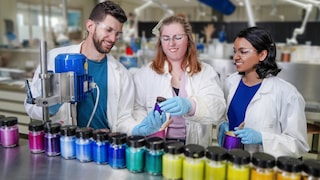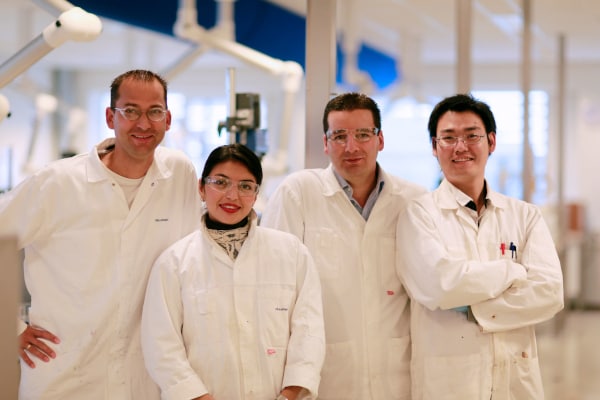
Innovation
Not everyone has an expert knowledge of rust. But then again, not everyone’s Doug Beaumont, AkzoNobel’s latest Scientist of the Year.
Affectionately known as “the corrosion guy”, ask him about the oxidation of ferrous metals (the rusting process) and you’ll enter a whole new world. A reddish-brown universe full of atoms, electrons and Fe2O3.xH2O – that’s hydrated iron (III) oxide, the most common chemical formula for rust (although there are many other forms), in case you’re wondering. Yes, every day’s a school day.
But that’s kind of the point. Because Doug’s highly specialized expertise – honed during 15 years at AkzoNobel – plays a pivotal role in product development at our Marine and Protective Coatings business. And it’s this in-depth grasp of physics, chemistry, corrosion and material science which has received deserved recognition in the shape of the much-coveted annual award.
“I was delighted to win the award and humbled to be recognized by my peers,” says Doug, who works as a Corrosion Protection Specialist within R&D at our Felling site in the UK. “I love what I do, but it’s important to mention that it’s a team effort, because I work alongside a lot of other people. I’ve also been mentored very well over the years by two or three absolute stalwarts of coatings science. So this is really a result of working with all my colleagues, past and present.”
Doug’s award acknowledges his invaluable understanding of what makes rust and corrosion tick – and how to stop it with our coatings. “There’s a lot of complexity to it, as you can imagine,” he explains. “The physics and the chemistry are one thing, but then there’s also the pace of change. Regulations and customer expectations are moving and shifting all the time. So there’s a lot to contend with. But in the end, it all comes back to having the fundamental expertise. You need that knowledge if you’re going to improve and keep moving forward.”
He's currently working in three main areas of corrosion protection – in marine coatings; corrosion under insulation (CUI) coatings for the oil and gas industry; and wind turbine blades. For example, he’s evaluating novel penetrating sealer compositions to stop rust in its tracks, working with customers to understand coating degradation and extend the life of ballast and crude oil tank coatings that have already been in service for decades. He’s also further exploring principles of leading edge protection coatings for wind turbine blades.
“My job is essentially to sit behind the product development activity and understand how the various ingredients are going to act when they’re combined,” he explains. “How are they going to manifest a certain physical response? How can we target a particular aspect to a particular property that someone else might not have thought of?”
Another considerable string to Doug’s scientific bow is the various external research collaborations he’s involved with. This includes working with academic groups in the corrosion and polymer science domains to support the development of our fundamental understanding of materials interactions. He also leads the Marine and Protective Coatings business’ involvement in industry consortia to drive the CUI coatings R&D agenda, where we can’t deliver the research outcomes in isolation and need to maintain partnerships with customers and specialized institutes.
As for the future, Doug says it can only be a matter of time before artificial intelligence starts to play a role. “We talk about machine learning a lot. Being able to combine our expert knowledge with machine learning philosophy and techniques is probably going to play a greater role in the work we do in the next ten years or so.
“That combination of insight with the speed and confidence of decision-making that machine learning can offer will give us some real pace when it comes to product development. It’s very much in its infancy in the marine and protective coatings formulation world at the moment. But we know it’s coming.”
Want to help us develop the sustainable paints and coatings of tomorrow?

